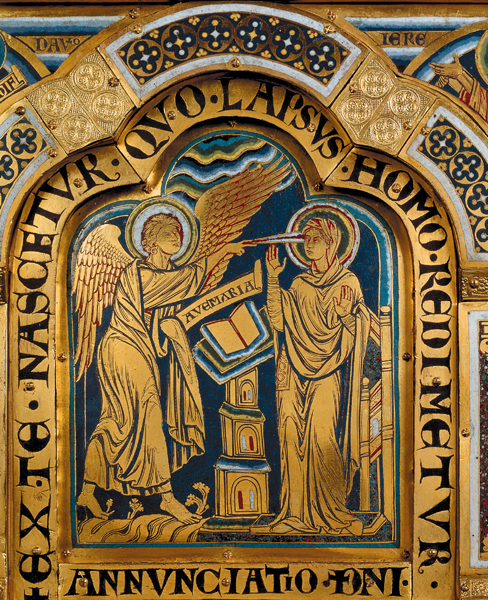Image Details

Erich Lessing/Art Resource, NY
Rays of light are another symbol commonly used by artists to show the divine impregnation of Mary. In this late-12th-century enamel altar by Nicholas of Verdun, Gabriel shoots rays of light into Mary’s eyes, almost as though he is casting a spell over her. As in previous examples, the impregnating Word is also indicated by the open Bible and the scroll unfurling toward Mary with the initial Ave Maria of the angel’s salutation.
The angelic salutation in Luke 1:28 opens the most famous prayer to the mother of God in the Catholic Church—the “Hail Mary” or Ave Maria. Widely used in the West by the 12th century (with variants attested in the East as early as the ninth century), the devotion originally combined Gabriel’s greeting in Luke 1:28 with Elizabeth’s greeting of Mary in Luke 1:42. Together, they read: “Hail Mary, full of grace, the Lord is with thee: Blessed art thou among women, and blessed is the fruit of thy womb, Jesus.” In the 14th and 15th centuries, it was common to add a clause at the end petitioning Mary’s help on behalf of sinners. By the 16th century, the prayer had assumed the form familiar today, which concludes with the words: “Holy Mary, Mother of God, pray for us sinners now and at the hour of our death.”
